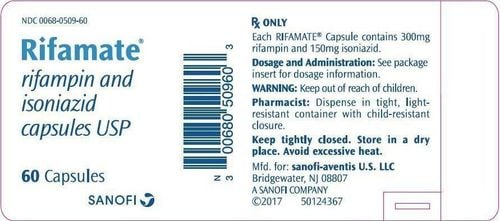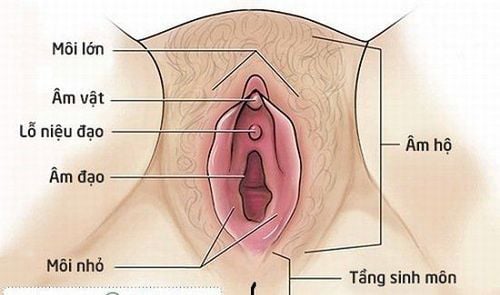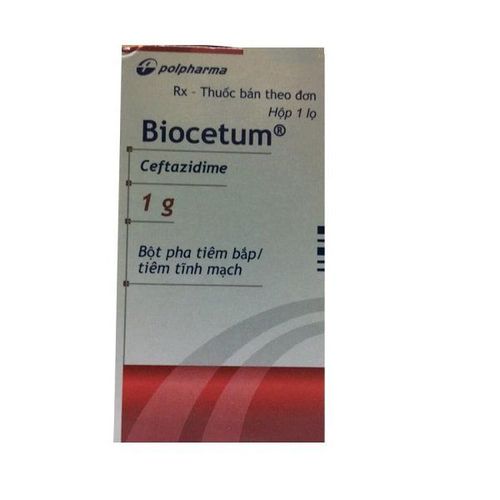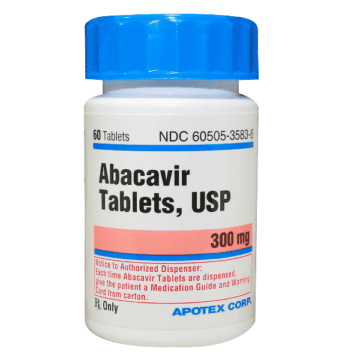This is an automatically translated article.
Antizidin is made in the form of a powder for injection, with the main ingredient being Ceftazidime. The drug is used in the treatment of bacterial, parasitic, viral, fungal infections...
1. Uses of Antizidin
What is antizidin? 1 vial of Antizidin includes 1g of Ceftazidime and 10ml of distilled water. Ceftazidime is a 3rd generation cephalosporin antibiotic. Ceftazidime has a bactericidal effect by inhibiting enzymes that synthesize bacterial cell walls. This drug is stable to most bacterial beta-lactamases (except Bacteroides enzymes). Ceftazidime is also susceptible to many aminoglycoside-resistant gram-negative organisms and gram-positive organisms resistant to ampicillin or other cephalosporins.
Indications to use Antizidin:
Treatment of lower respiratory tract infections; Treatment of skin and skin structure infections; Treatment of urinary tract infections (complicated or uncomplicated); Treatment of bone and joint infections; Treatment of gynecological infections; Treatment of intra-abdominal infections; Treatment of central nervous system infections (including meningitis). Contraindications to the use of Antizidin:
Patients with a history of shock when taking the drug; Hypersensitivity to cephalosporin antibiotics.
2. How to use and dose Antizidin
How to use: Intravenous or deep intramuscular injection. Usually, the doctor injects into the upper quadrant of the buttocks or the lateral part of the thigh.
How to make solution for infusion:
Solution for intramuscular injection: Mix Ceftazidime 1g in 3ml distilled water for injection or with 0.5 % or 1% lidocaine hydrochloride solution; Intravenous solution: Mix Ceftazidime 1g in 10ml of distilled water for injection or with 0.9% sodium chloride or 5% dextrose solution; Solution for infusion: Mix the drug in solutions as in intravenous injection but with a concentration of 10-20mg/ml (1-2g drug in 100ml of solvent). Dosage:
Adults: Use 1g every 8 hours or 2g every 12 hours, deep intramuscular injection or intravenous infusion; Patients with hepatic impairment : No dose adjustment is recommended; Patients with renal impairment: Adjust dose according to creatinine clearance. Specifically: Creatinine clearance 31 - 50ml/min: Dose of 1g every 12 hours/time; Creatinine clearance 16 - 30ml/min: Dose of 1g every 24 hours; Creatinine clearance 6 - 15ml/min: 500mg dose every 24 hours; Creatinine clearance < 5ml/min: 500mg every 48 hours; Children: Dosage depends on the doctor's prescription or the following recommendations: Infants 0 - 4 weeks old: Use a dose of 30mg/kg, intravenously every 12 hours; Children 1 month - 12 years old: Use a dose of 30 - 50mg/kg, intravenously up to 6g/day, every 8 hours; Elderly: The usual dose should not exceed 3g/day, especially in patients over 70 years of age. Overdose: An overdose of Ceftazidime can lead to neurological sequelae including encephalopathy, convulsions and coma. Serum concentrations of ceftazidime may be reduced by dialysis.
Missed dose: Antizidin is used in the hospital, administered by medical staff, so it is rare to miss a dose.
3. Antizidin side effects
When using Antizidin, patients may experience some side effects such as:
Shock: Possible (though rare). Patients may experience tactile disturbances, stridor, dizziness, abnormal taste, tinnitus, sweating,...; Hypersensitivity: Patients may develop rash, urticaria, erythema, pruritus, skin flushing, erythema nodosum, anaphylactic reactions (bronchospasm, hypotension), angioedema; Skin: Erythema, Lyell's syndrome, Steven - Johnson syndrome; Central nervous system: Headache, dizziness, paresthesia, decreased taste. There are cases of tremor, myoclonus, convulsions, encephalopathy,... in patients with renal failure who used Ceftazidime but did not reduce the dose appropriately; Kidney: Decreased kidney function; Hematologic: Leukopenia, pancytopenia, agranulocytosis, thrombocytosis, anemia, hemolytic anemia, granulocytopenia, lymphocytosis, eosinophilia, thrombocytopenia, decreased neutrophils, transient increases in blood nitrogen, blood urea or serum creatinine; Liver: Jaundice, increased AST, ALT, bilirubin, GGT, LDH, g-GTP,...; Gastrointestinal: Severe colitis accompanied by bloody stools of pseudomembranous colitis; diarrhea, nausea, vomiting, loss of appetite, feeling thirsty; Respiratory: Interstitial pneumonia with flushing, dyspnea, cough, chest X-ray disturbance, eosinophilia and PIE syndrome; Superinfection: stomatitis, candidiasis; Vitamin deficiency: Vitamin K deficiency (hypoprothrombinemia, tendency to bleeding), vitamin B deficiency (stomatitis, glossitis, anorexia, neuritis); Other side effects: Phlebitis or thrombophlebitis after intravenous administration; pain or inflammation after intramuscular injection. When experiencing side effects of Antizidin, the patient should immediately notify the doctor for the most appropriate treatment.
4. Be careful when using Antizidin
Some notes for patients to remember before and while taking Antizidin:
Caution when using Antizidin in people with hypersensitivity to Ceftazidime, cephalosporins and other penicillins; There is a situation of cross-reactivity between penicillins and Cephalosporins; When taking Antizidin, the patient may have pseudomembranous colitis; Patients with renal failure need to reduce the daily dose of Antizidin; High concentrations of Antizidin can cause convulsions, loss of balance, encephalopathy and neuromuscular excitability; Use of Ceftazidime may reduce prothrombin activity in patients with hepatic, renal or malnourished patients; Use caution when using Antizidin in people with a history of gastrointestinal diseases, especially dysentery; Cephalosporins in general and Ceftazidime in particular are considered safe during pregnancy. However, there are still no detailed studies on pregnant women, so this drug should only be used in pregnant women when absolutely necessary, with the permission of a doctor; Because Ceftazidime is excreted in human milk, caution should be exercised if the drug is administered to a nursing mother; Antizidin can cause headaches, dizziness, so it should be used with caution when driving or operating machinery.
5. Antizidin drug interactions
Drug interactions that can affect the effectiveness of the drug / treatment or increase the effect of side effects. Some drug interactions of Antizidin include:
When using Ceftazidime (the main ingredient of Antizidin) with aminoglycosides or strong diuretics such as furosemide may increase the risk of nephrotoxicity; The potency of Ceftazidime may be increased when used concomitantly with uricosuric agents; Co-administration of Ceftazidime with ciprofloxacin increases the synergistic effect against Burkholderia cepacia; The combination of Ceftazidime and clavulanic acid may be synergistic against certain strains of Bacteroides fragilis that are resistant to Ceftazidime when used alone; Because Chloramphenicol is antagonistic to beta-lactam antibiotics, including Ceftazidime, it is necessary to avoid the combination of these two drugs when bactericidal action is required; Ceftazidime may decrease the effectiveness of typhoid vaccine; Do not mix Ceftazidime in sodium bicarbonate solution because it will reduce the effect of the drug; Do not mix Ceftazidime in a solution with a pH above 7.5; When ceftazidime is combined with vancomycin, it should be administered separately to avoid precipitation; Do not mix Ceftazidime with aminoglycosides (eg, gentamicin, streptomycin) or metronidazole. Needles and catheters should be carefully rinsed with saline (0.9% sodium chloride) solution between administrations of these two drugs to avoid the risk of precipitation. When prescribed to use Antizidin, the patient should absolutely follow and coordinate with all instructions of the doctor. At the same time, patients should fully inform the doctor about their medical history and the medications they are taking so that they can make appropriate adjustments. This also helps avoid the risk of drug interactions that can lead to unpredictable consequences.
Follow Vinmec International General Hospital website to get more health, nutrition and beauty information to protect the health of yourself and your loved ones in your family.
Please dial HOTLINE for more information or register for an appointment HERE. Download MyVinmec app to make appointments faster and to manage your bookings easily.













